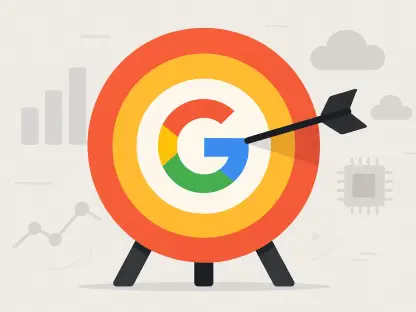In today’s fast-paced business environment, the ability to accurately forecast revenue is crucial for the strategic planning and financial health of any organization. Data science and Dataops (data operations) have emerged as essential tools to help companies harness their data, refine predictive models, and produce reliable revenue forecasts. Accurate forecasting not only helps in budgeting and resource allocation but also provides valuable insights for decision-making across various departments, including finance, sales, and marketing.
Forecasting revenue encompasses a series of steps that require careful data collection, analysis, and interpretation. This process ensures that businesses can predict their future earnings with a reasonable degree of accuracy, incorporating both internal and external factors that might influence growth or decline. By leveraging data science and Dataops, companies can streamline this process, improve data quality, and enhance the reliability of their forecasts.
1. Collect Data
Revenue forecasting begins with collecting data from a variety of internal sources, such as Enterprise Resource Planning (ERP) systems, Customer Relationship Management (CRM) systems, marketing automation platforms, and customer service tools. ERPs provide financial and operational data, CRMs offer insights into sales activities and customer relationships, marketing platforms highlight campaign performances, and customer service tools reveal client interactions and feedback.
Equally important are external sources of data, which include economic indicators, information on customer demand, regulatory changes, climate forecasts, and political factors. Economic indicators reflect the broader economic environment in which a company operates and can significantly affect revenue forecasts. For instance, a sudden economic downturn may reduce consumer spending and demand for products or services. Similarly, regulatory changes can either open up new avenues for business or impose constraints that affect operational efficiency. Climate forecasts and political factors, such as trade policies, also play a role in shaping business expectations.
2. Select Time Frames
After gathering data, the next step is to select the time frames for analysis to determine the relevant data sets and segments. Selecting appropriate time periods is vital as it influences the accuracy and relevance of the forecasting models. Typically, revenue forecasts are performed for various horizons, including short-term (monthly or quarterly), medium-term (annual), and long-term (multi-year) periods.
The choice of time frames often depends on the specific needs and context of the business. For instance, retail companies may require short-term forecasts to manage inventory levels and plan promotional activities, while manufacturers may focus on medium-term forecasts to plan production schedules and manage supply chains. Long-term forecasts, although less precise, provide strategic insights and help in long-term planning and investment decisions.
3. Review External Factors
Forecasting revenue is not only about internal data; it also involves reviewing external factors, constraints, and other risks that might accelerate or inhibit growth. These factors include but are not limited to, supply chain dynamics, strategic business decisions, labor market conditions, and other global and local events.
Supply chain factors can significantly impact revenue projections. Disruptions in the supply chain can lead to stockouts, delayed shipments, and increased costs, all of which affect the company’s ability to fulfill customer orders and generate revenue. Strategic decisions, such as entering new markets or launching new products, should also be factored into the forecasting process as they can drive growth or redirect resources.
Labor conditions, including the availability and cost of labor, can influence operational efficiency and, consequently, revenue. Lastly, global and local events, such as natural disasters, pandemics, and political unrest, can create uncertainties and affect business operations. By considering these external factors, companies can develop more realistic and robust revenue forecasts.
4. Choose Tools and Models
Choosing the right tools and models is a critical step in the forecasting process. FP&A professionals need to select tools and forecasting models that can accurately predict revenue from existing customers, various revenue sources, and new customer orders. This step often involves using a combination of top-down and bottom-up approaches to create comprehensive forecasts.
The top-down approach focuses on the overall market or economic trends and then breaks down the revenue projections into smaller segments. It is useful for understanding the broader business environment and its impact on revenue. On the other hand, the bottom-up approach starts with detailed forecasts of individual business units, product lines, or sales pipelines and aggregates them to produce an overall forecast. This approach is valuable for capturing the nuances and specific drivers of revenue at a granular level.
To enhance the accuracy of forecasts, it is beneficial to create multiple models and consider different planning scenarios. Benchmarking against external forecasts, such as industry reports or economic projections, provides a basis for comparison and validation. The selected models should be integrated into ERP, CRM, and planning tools to align resources and monitor forecast accuracy over time.
5. Present and Integrate Models
The final step in the revenue forecasting process is to present the models to executives and integrate them into the company’s operational systems for alignment and monitoring. Effective communication of forecast results is crucial for gaining executive buy-in and facilitating informed decision-making.
Finalized models should be presented in a way that highlights key assumptions, methodological choices, and underlying data sources. Visualizations, such as dashboards and charts, can help executives grasp complex data and trends quickly. Once approved, the models should be integrated into ERP and CRM systems to ensure that forecasts align with resource planning and day-to-day operations.
Continuous monitoring of the models is essential for maintaining their accuracy and relevance. This involves tracking actual performance against forecasts, identifying deviations, and adjusting models as necessary. By integrating revenue forecasts into operational systems, businesses can ensure that their strategies are aligned with financial goals and market conditions.
In conclusion, leveraging data science and Dataops techniques can significantly enhance the accuracy and reliability of revenue forecasts. By systematically collecting and analyzing data, selecting appropriate time frames, reviewing external factors, choosing the right tools and models, and effectively presenting and integrating forecasts, businesses can make informed decisions and strategically plan for the future.









